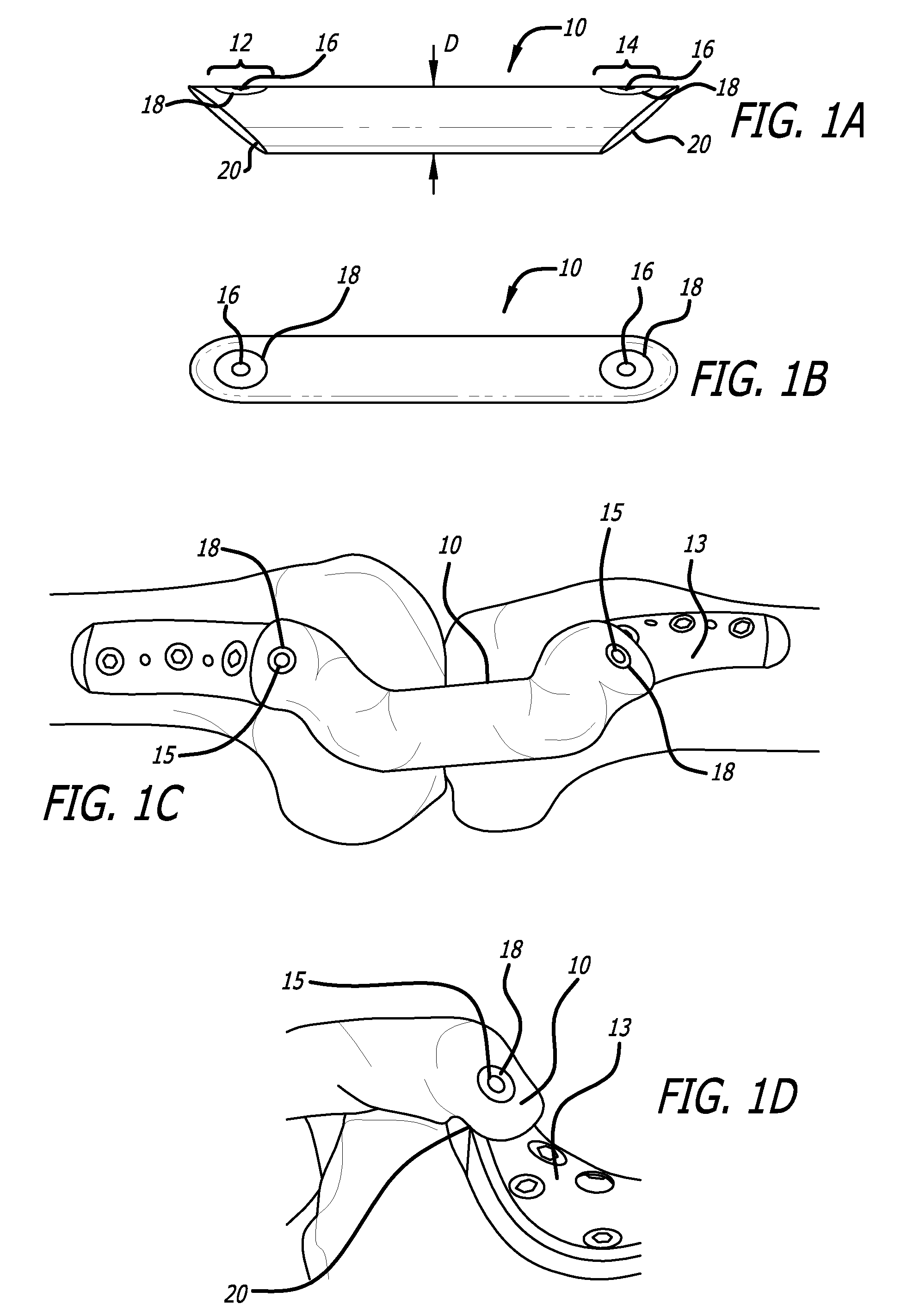Sheaths for extra-articular implantable systems
a technology of implants and articular parts, applied in the field of structures for attachment to body anatomy, can solve the problems of chondroprotective therapy, arthroplasty procedures are characterized by relatively long recovery time, high invasive procedures, etc., and achieve the effects of preventing impingement of surrounding tissue, facilitating the removability and replacement of energy-absorbing components, and promoting tissue ingrowth
- Summary
- Abstract
- Description
- Claims
- Application Information
AI Technical Summary
Benefits of technology
Problems solved by technology
Method used
Image
Examples
Embodiment Construction
[0001]Various embodiments disclosed herein are directed to structures for attachment to body anatomy, and more particularly, towards approaches for providing a protective sheath for extra-articular implantable systems.
BACKGROUND
[0002]Joint replacement is one of the most common and successful operations in modern orthopaedic surgery. It consists of replacing painful, arthritic, worn or diseased parts of a joint with artificial surfaces shaped in such a way as to allow joint movement. Osteoarthritis is a common diagnosis leading to joint replacement. Such procedures are a last resort treatment as they are highly invasive and require substantial periods of recovery. Total joint replacement, also known as total joint arthroplasty, is a procedure in which all articular surfaces at a joint are replaced. This contrasts with hemiarthroplasty (half arthroplasty) in which only one bone's articular surface at a joint is replaced and unincompartmental arthroplasty in which the articular surface...
PUM
 Login to View More
Login to View More Abstract
Description
Claims
Application Information
 Login to View More
Login to View More - R&D
- Intellectual Property
- Life Sciences
- Materials
- Tech Scout
- Unparalleled Data Quality
- Higher Quality Content
- 60% Fewer Hallucinations
Browse by: Latest US Patents, China's latest patents, Technical Efficacy Thesaurus, Application Domain, Technology Topic, Popular Technical Reports.
© 2025 PatSnap. All rights reserved.Legal|Privacy policy|Modern Slavery Act Transparency Statement|Sitemap|About US| Contact US: help@patsnap.com



